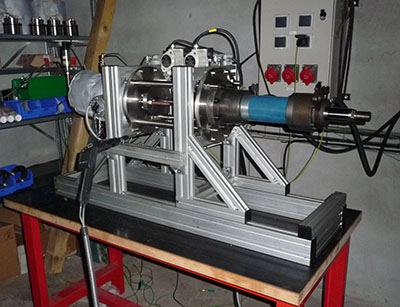Methane-tested valve packings
The valve packings sold to North American oil companies must undergo leak tightness tests as stipulated in the API 622 standard. The Latty group chose to perform methane tests in France. API 622 is the only standard recognised by the North American market to guarantee the capacity of sealing devices to limit emissions into the atmosphere of volatile organic compounds (VOCs), stemming from oil industry valves. This standard dictates that methane should be used as a test medium. In Europe, laboratories use helium to perform this type of leak test. “We would have had to rely on the services of a laboratory located in the United States with lead times of approximately four months. This solution was too long and too far away to allow efficient performance of qualification tests. It was a real obstacle to developing our sales on this market”, recalled Thierry Ledauphin, R&D manager at the Latty International production site. Since September 2013, a test rig that complies with the requirements of the American standard has been designed, built and installed by the Cetim teams in Nantes.
An API 622 bench
The packings to be tested are installed in a rig designed based on a 300-lbs class valve. The test rig is equipped with an actuator capable of stroking the test stem to simulate the mechanical cycle of a valve. A flame ionisation detector (FID) measures the concentration of methane at the stem seal. The tests last three days with 500 mechanical cycles per day at a rate of 250 cycles at room temperature and 250 at 260°C. This process is carried out at 41 bars of methane pressure. Thanks to this test bench, a new Latty packing set developed by Latty International specifically for the oil industry was type-approved according to API 622 standard. “This packing set is suited to more than 90% of all applications used by the oil industry. In parallel, we are continuing to develop new packings for specific applications that we intend to test on the Cetim bench in the upcoming months”, stated Thierry Ledauphin.


